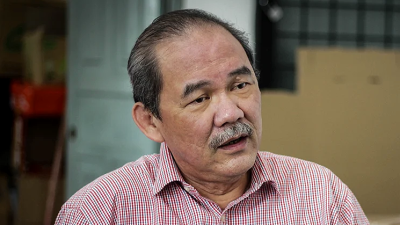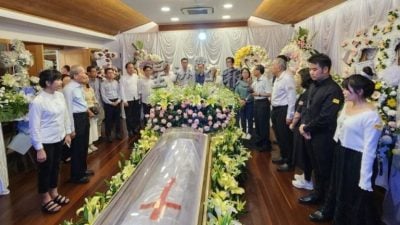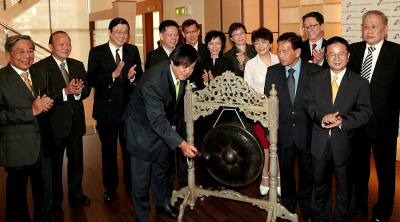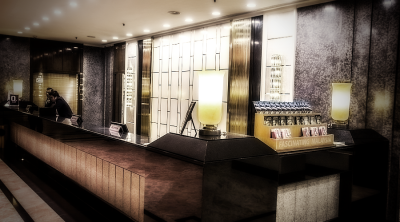
Tourism is a big money-churner in Thailand, and many Malaysian businessmen have seen the huge potentials of this sector and are rushing into the Kingdom to invest in luxury hotels and chic restaurants.
Authentically Cantonese
In addition to spicy tom yam and palatable mango sticky rice, Thailand's bustling capital city is also famous for a wide array of iconic street foods and Chinese restaurants, including posh Cantonese restaurant chain Hong Bao which is frequented by royal family members, senior government officials, successful business tycoons as well as tourists from Greater China.
The restaurant chain has gained in popularity among tourists from Greater China and has been touted as restaurant not to be missed while visiting Bangkok.
Hong Bao was started by Malaysian restaurateur Lim Wei Ping and three of his friends in 2012. The chain has since developed into seven glitzy restaurants scattered in Bangkok's most luxurious shopping malls and high-end residential enclaves.
"We make sure every dish we serve our customers is authentically Cantonese."
Lim, who is from Muar, told Sin Chew Daily at the restaurant's Central Embassy branch that the company has insisted to use only the most authentic and fresh ingredients as well as sauces produced by established brands.
"The name Hong Bao was decided by the shareholders. We initially wanted to use the Teochew word 'angpao' but later decided on the Mandarin version of 'Hong Bao' because most of our customers are from Mainland China, either living in Thailand or on vacation here."
"They may want to try Thai food during their first few days here but later they will start to yearn for the more familiar Chinese taste. So they start looking for authentic Chinese restaurants in the city.
Specializing in Cantonese dim sum, roasted pork and various Cantonese fares, Hong Bao has opened in some of the city's most upmarket malls from Sukhumvit to the newly opened super-luxurious Iconsiam.
"Hong Bao has become a household name among the local Chinese as well as tourists. Our customers come with high expectations and we will do our utmost to satisfy them."
Instead of focusing excessively on profitability, Lim said Hong Bao is more concerned about the customer's satisfaction.
"We always tell our branch managers if a customer is unhappy with any dish, just change it without a question. We have to do our best so that customers will get the best from us."
Witnessing the ups and downs of hotel industry
High-end tourists are well familiar with the name Sindhorn, a luxurious hotel chain and one of the Thai royal family's many investments. Among its most notable establishments is Siam Kempinski located next to Siam Paragon.
Hailing from Ipoh, 49-year-old Tan Jee Hoong graduated with a degree in hotel management. He started humbly as a waiter back in the 1990s at a time Kuala Lumpur was rushing to build five-star hotels. Tan served in many of them, including Mandarin Oriental, Westin and Sheraton.
"Krabi in southern Thailand was badly hit by the Indian Ocean tsunami in 2004, while I was at Sheraton. I saw the hotel's occupancy rate plunged from 90% to merely 5% and then recovering to 45%. It was a great achievement for me then."
He later assisted the hotel group to set up Le Meridien in Silom in 2006 during the street protests by the Yellow Shirts.
"All these years serving in the hospitality industry in Thailand, I have seen tsunami, floods, demonstrations but all the hotels I managed survived.
"Cutting prices during the bad time will not help bring more guests but may compromise the hotel's overall standard."
He joined the Kempinski group some ten years ago, and today, he is the group general manager of Sindhorn in charge of the soon-to-be-opened Sindhorn Midtown as well as the second Kempinski property in Bangkok and the adjoining serviced apartment project.
He said being born and raised in multicultural Malaysia gave him the added advantage as he could more readily assimilate into the local Thai society.
"There are actually a lot of things we can do for Malaysia's tourist industry," he concluded.
A nation of car lovers

Thais are car lovers and will spend time and money modifying their cars.
Seeing the robust opportunities of this business, 48-year-old Malaysian businessman Tang Heng Tat started a tire and rim business when he came to Thailand seven years ago. Today he has become a legendary icon in this line.
The most popular car in Thailand is Hilux because it is easy to modify.
Hailing from a fisherman family in Penang, Tang started his working life after graduating from Chung Hwa Confucian High School, working as a milk powder salesman in Brunei. He later became a construction material supplier in the country.
"One day, a factory client gave us a rim and said we could look for him if we were interested to go into this business in future.
"I didn't have any experience in this line at that time. Later I came to Bangkok and saw one whole street selling tire rims. So I tried to sell rims in Bangkok from 2013."
He went on to say, "You need to speak Thai to do business here. You must also know about the consumer trends and needs here.
"It is difficult for foreigners to start a business in Thailand. You must learn Thai and slowly build up your connections. Once they see you as one of them, they will do business with you.
"You must also manage your cash flow well, as many local businessmen tend to defer their payments."

ADVERTISEMENT
ADVERTISEMENT


































